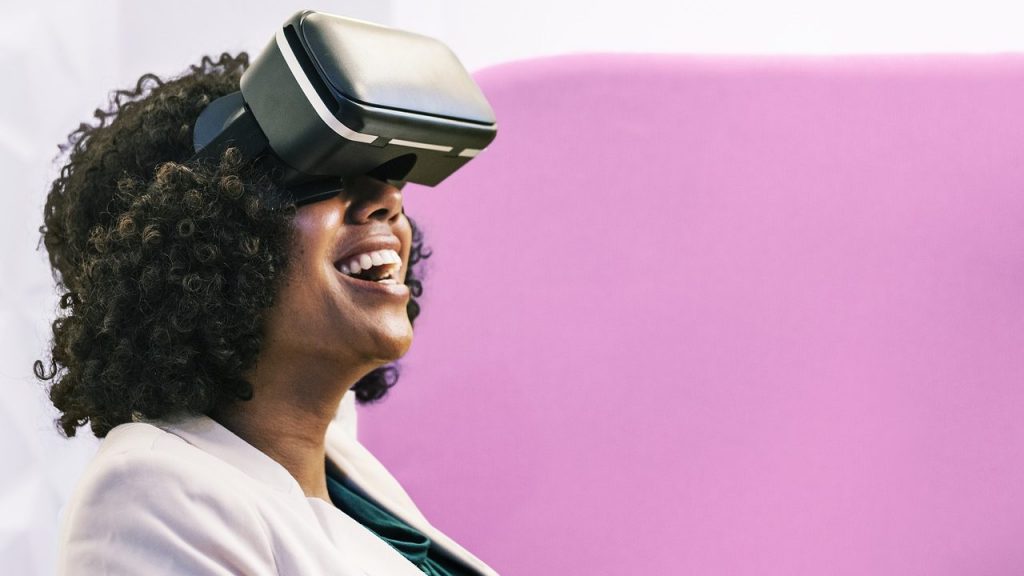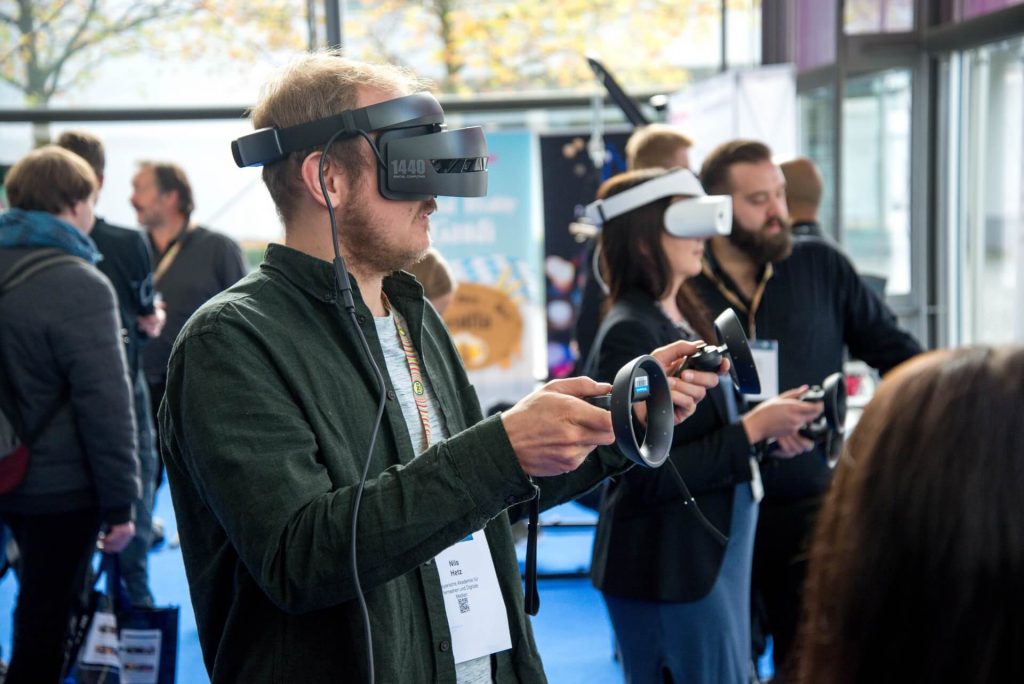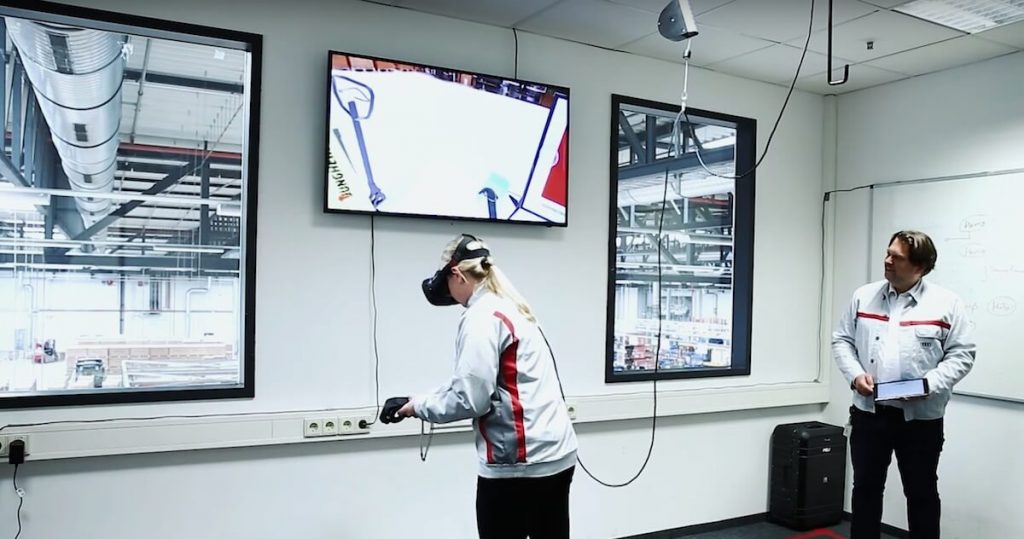It is a well-known fact that the best way to learn something is through real-life experience. Since that is not always an option, we try to get as close to it as possible. Nowadays, thanks to modern technology, we are closer to it than ever. The number of companies using VR for corporate training is growing by the day. You too could find yourself being trained with the help of VR much sooner than you think. If you are new to VR (virtual reality), this type of technology may seem a bit confusing. VR uses 3D-generated images to create a simulated environment so the user feels like they are actually in that environment. Imagine wearing goggles that enable you to see another world – that is what a virtual reality headset does.
There are three types of VR headsets:
- Mobile: The users insert their mobile phone into a VR headset;
- Standalone: No additional cables or devices are required;
- Desktop: VR is powered by high-end computers and a virtual reality headset.
The benefits of VR for corporate training
Thanks to VR, employees can be trained in a safer way that is also budget-friendly. VR has made training for high-risk situations in a completely safe environment possible. Not to mention how much it reduces the costs of travel and training. In addition, the trainees learn through practical experience, which is known as the most effective way of learning. People have different learning styles (visual, aural, verbal, physical) – and VR takes all these styles into account. Finally, beginners’ mistakes are easier to fix when made in a simulated environment.
Examples of using VR for worker training
Healthcare
The benefits of using VR in the healthcare sector are numerous:
- Med students can acquire empathetic communication skills. For example, VR technology is used to teach students how to break the bad news to patients. In a hospital setting, they learn how to interpret verbal and nonverbal cues from characters and how to respond in different scenarios through real-time conversations.
- Teamwork is crucial for a successful medical intervention. It could be an emergency response team arriving at a scene, a team of doctors and nurses performing an operation, or some other scenario. VR allows you to create these scenarios and practice teamwork in a life-like setting.
- VR also helps practice measuring and diagnosis by creating a scenario which is very close to the actual procedure. This way, the staff learns to perform the measurement correctly, interview patients, and identify important information. This is easier than doing simulations with actors and more effective than using 2D images, slides or videos.
- VR can help trainees learn about operating medical equipment while eliminating the costs of using real equipment.

Retail
The retail industry is also beginning to venture into VR territory. Walmart is one of the companies using VR to train employees in management and customer service. A 360-degree video-based technology that includes on-screen cues helps staff practice real-life situations, such as dealing with Black Friday rush.
Aerospace
NASA is one of the earliest adopters of VR for training. Thanks to VR, astronauts are trained in a way they have never been trained before. VR enables them to practice completing tasks in a zero-G environment. To be more precise, NASA uses VR to train astronauts in spacewalking. In this scenario, the astronaut leaves the spaceship to perform a task such as replacing a faulty module on the spacecraft. Spacewalking is particularly problematic since astronauts cannot really prepare for it. They have no idea what it is like until they are actually doing it. With VR, they can significantly reduce the risk of error by getting an idea of what to expect in reality.
Hospitality
With VR technology, you can simulate a user inside a store and allow them to interact with various elements. This provides a suitable context for training and learning which can be entertaining for the trainee as well.
Honeygrow, a fast-food chain that specializes in stir-fry and salads, uses VR to provide trainees with a tour of a Honeygrow location. Employees have a 360-degree view as they listen to the Founder and CEO of the company.
Law enforcement
Law enforcement is one of the top industries interested in using VR for employee training. One of the biggest benefits VR has brought to law enforcement is the possibility to train employees in a safe environment. This is of great importance since we are talking about high-risk jobs. Practicing different scenarios (from taking interviews to arresting suspects) is now easier than ever – you don’t have to create a new room each time.
Firefighters
Firefighters can also obtain their skills with the help of VR without actually putting themselves in danger. Thanks to VR, they can see a virtual fire and practice the best ways to approach it. This way, there is no need to burn anything, including money!
Research confirms VR’s applicability
Research shows a steady growth of using VR in the L&D space. Findcourses.com carried out research on Learning and Development. You can read the U.S. L&D Report: 2019 where they also showcase the latest applications of VR for learning in organizations. VR is being used not only to teach practical skills but to foster value such as diversity and inclusion.
Conclusion
All things considered; it is almost certain that VR technology is the future of corporate training. It is already beginning to revolutionize the way companies develop talent and transfer knowledge to the next generation of employees. Now that you have seen how VR technology is used for corporate training in different fields -and we hope you’ve taken notes – you can start thinking about how your learning programs can benefit from it.





